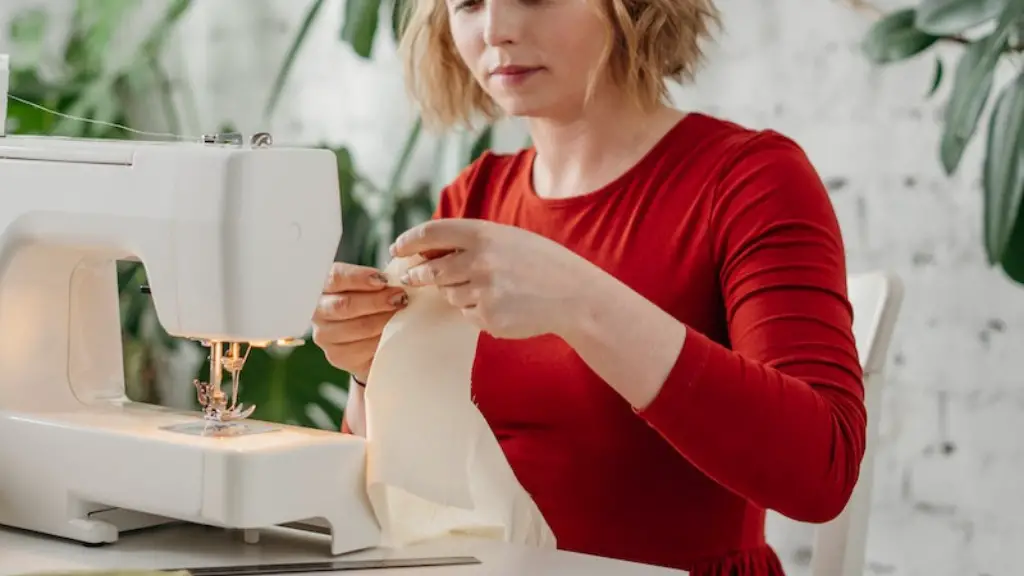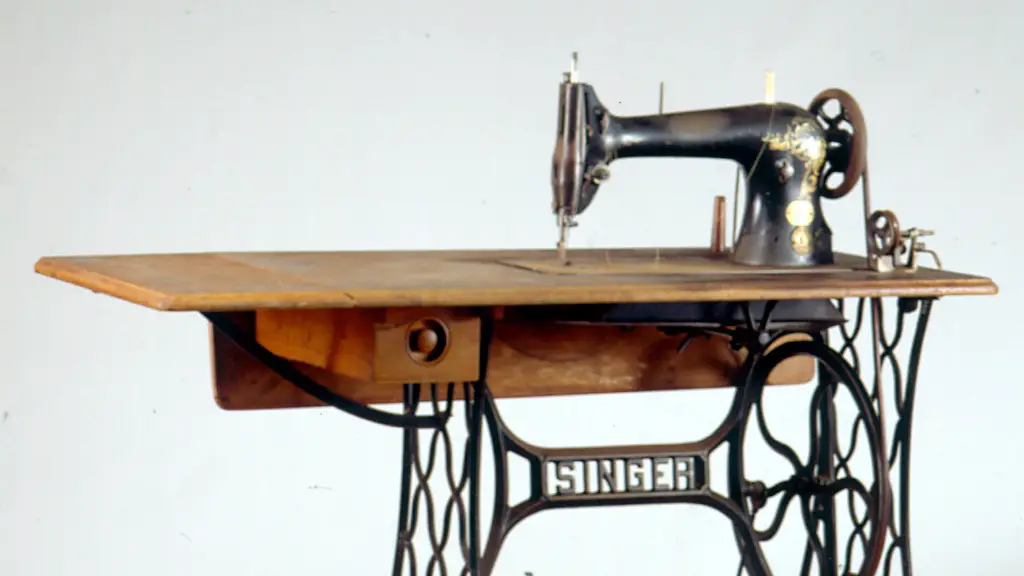Many people opt to sew as a hobby or a livelihood. Apart from the highly efficient and modern sewing machine, they need to have a reliable, safe and secure storage case. It is important to build a sewing machine case that not only complements the specific requirements of the sewer but also provides the much-needed protection to the equipment. This article outlines the different ways of how to build a sewing machine case.
Before beginning to build the case, it is important to decide on the materials that will be used for the project. Generally, the materials you choose must be sturdy enough to resist wear and tear and also have to be seamless when it comes to providing excellent protection for the machine. Every sewer may have individualistic preferences when it comes to the type of material they want to use. Experts recommend using fabric and foam to create a lightly padded material. Other materials include hardwood and polycarbonate. Create a sketch based on the measurements of the sewing machine so that you can gauge the exact measurements required for the completion of the case.
The next step involves using the measurements in the sketch to trace its outlines onto the material. Make sure that you mark two lines representing the boundaries of the outline. Once done, you must use suitable scissors to cut along the edges. At this juncture, keep in mind to add one inch to the length and width of the outline. This extra size will be useful for sewing the edges of the material once the case is complete.
It is essential to provide a decent amount of padding for the sewing machine wherever applicable. Take the foam and trace out a shape similar to the fabric, but cut it one inch smaller than the fabric on all sides. This allows the foam the deploy its capabilities of providing adequate shock absorption to the machine. Place the foam onto the material and secure it using appropriate adhesive.
Begin by applying the adhesive at all four corners of the foam. Once that is done, go ahead and secure along the edges using small strips of adhesive. Make sure that all edges of the foam and material are evenly tucked together. Expert tip: always use high-quality adhesive designed to last longer and non-toxic to ensure child-safety.
You may now begin to sew the edges of the fabric together. Use high-quality threads to secure the edges and make sure that your stitching is high-quality with no gaps. To ensure longevity of the case, employ box stitching and ensure that the corners stay firmly attached. In this regard, it is beneficial to get assist from a professional and long-lasting result.
Now it is time for you to add velcro strips to the material. This step is important to attach and secure the lid of the case to the base. Make sure you apply them evenly along the edges and make sure that once it is in place, it is secured strongly. Experts recommend using high-quality Velcro strips for long-term usability.
Lastly, make sure that the case is lined with a soft cushioning material to ensure the machine is not scratched. After ensuring that the case is lined up with a cushion, gently place the sewing machine into the case and use the Velcro strips to close and secure the lid. With that said, your sewing machine case is now complete.
Upgrade your sewing machine case
A completed sewing machine case is not merely a storage box but also an accessory. To make sure your case stands out and looks attractive, there are various ways you can upgrade it. One such way is to use an interior lining of lace fabric to give it a delightful visual effect. Alternatively, sew faux gems or plastic beads of different colors along the edges. This will look like a piece of jewelry and make your case stand out!
You can also make use of symbolic designs to decorate the case. Choose designs relevant to your profession or sew logos or badges that portray your craft. For instance, a chef may choose to sew a kitchen-themed fabric, or a mathematician may select an appropriate fabric or pattern the exterior of the case. There is no limit to personalizing your sewing machine case for cozy storage.
Painting designs on the outside can also help give your case a unique look. Pick bright colors that mix and match providing your case with an attractive and artistic design. Moreover, adding other accessories such as knobs, keys and locks can provide additional security.
Hanging hang tags ensures that the cases look highly professional, like they were bought from a retail store. The trade show industry, in particular, makes use of hang tags on their cases, promoting their businesses and services. The hang tags can be personalized with the company logo, business name, and website address.
You may also choose to include caster wheels on your case. This helps a great deal for users who are frequently on the go and need to move their machine around. The wheels also add a professional look to the standard cases.
Textile Decoration
You may always choose to give the exterior of your case a hot iron-on finish. There are a variety of textile decoration methods available to customize your case, such as screen printing, embossing and embroidery. Each of these—and many more—can help create a custom look with professional finishes. For instance, iron-on may include adhesive materials that are flexible for the fabric, and are typically waterproof, heat resistant, and long-lasting.
Also available is sublimation printing, which produces custom logos and designs that can be used to promote Brands or other facts. Through this process, digital images are printed onto the fabric, which is then permanently dyed into the cloth.
Textile decoration can also be achieved via a simple paint or die-cut, allowing you to stencil patterns, letters and logos onto the fabric. Such decorations look very professional and can help create a unique look for your sewing machine case.
Again, the type of material you choose will determine the type of design you prefer when customizing the exterior of your case. Some materials may be easier to paint, while others are better suited for prints or embroidery.
Storage Materials
The material used to line the interior of your sewing machine case is just as important as the material used to make the case. Generally, some of the popular materials include velvet and velour, which are considered luxurious materials. Not only do they provide an excellent level of cushioning, they also have the ability to make your case look very attractive.
Moreover, you may also choose to use quilted fabrics for the interior of your sewing machine case. Not only does this make for a stunning interior, the extra padding and protection it provides the machine is invaluable. Quilted fabrics are also extremely durable, making it possible to store your machine for longer periods. Furthermore, the quilting feature serves as an extra layer of protection to absorb shocks and protect your sewing machine from any potential damages.
With that said, apart from quilting fabrics, some of the other popular materials include foam, felt, cottons and vinyls. Foam is a relatively popular material as it is both lightweight and soft. What’s more, it is heat-resistant too and provides an adequate amount of protection for your machine. On the other hand, felt is waterproof and also provides shock absorption which makes it great for cushioning the machine.
Engravings
Engravings are a great way to personalize your sewing machine case. With engraving, you can place a personal message or simply a name onto the front or sides of the case. This will show the world who the machine belongs to, and will also help to protect it from being stolen. Moreover, this practice of engraving also looks visually appealing and can be achieved with minimal effort.
In comparison to painting designs onto the exterior of your case, engraving is a much cleaner and tidier look. You can choose a specific font, size, or design that best suits your personal requirements. Beyond that, you have the freedom to select from a wide range of engraved finishes, from matt or glossy, to raised or recessed lettering. The choice is yours.
Opting for engraving has many significant advantages over painting. Namely, it is waterproof, scratch-resistant and fade-resistant, meaning the message on the case is more likely to stay intact for longer periods. What’s more, anyone can easily clean and wipe off an engraved message without taking off any of the finish, while painting can become scratched and removed over time with cleaning and use.
Additional Features
Other options may include adding additional pockets and compartments to the interior of the case for storing smaller items. Keep in mind that the quality of the pockets and compartments can vary depending on the material you choose. Generally, you have the choice of nylon, felt or bonded nylon.
Having extra pockets can come in very useful, notably for providing easy access to additional tools and materials. Usually, pockets come as fronts, which are fixed around the interior walls, and you also have the option of zip pockets for added security. Also, a handle or strap for carrying is a great way to make your sewing machine case more appealing and accessible. For a professional look, consider using solid straps with a simple catch or buckle.
Sticking labels and badges into the exterior of the case is another excellent way of personalizing your case and ensuring it looks entirely unique. It could be anything from an animal logo to an inspirational quote. The possibilities are endless! You may even consider getting hand-tooled leather labels or stickers for a touch of visual impact.
As such, there are various options for building a sewing machine case. These, along with the above mentioned elements, will help build a long-lasting, safe and efficient case. Keeping an aesthetic as well as practical approach is crucial when you’re building a case for a sewing machine. It will ensure craftspeople enjoy high-level protection, which is crucial for the longevity of the equipment.




